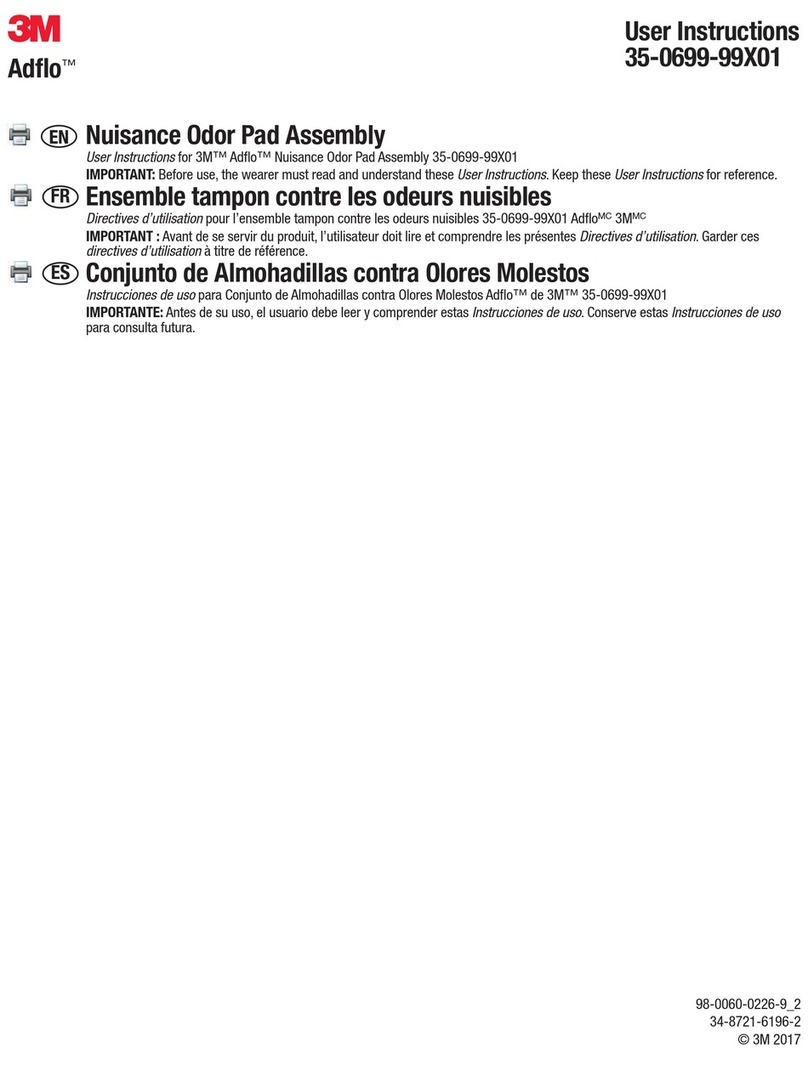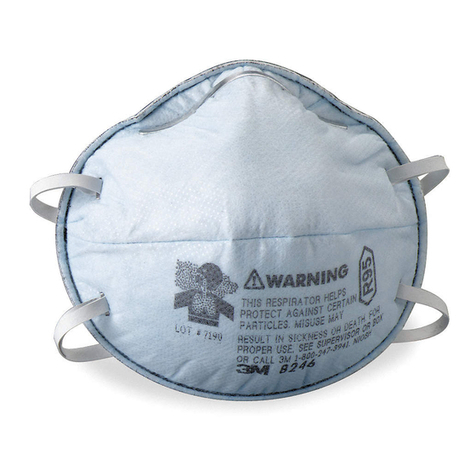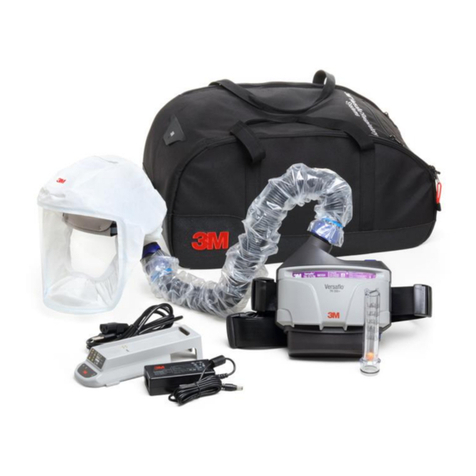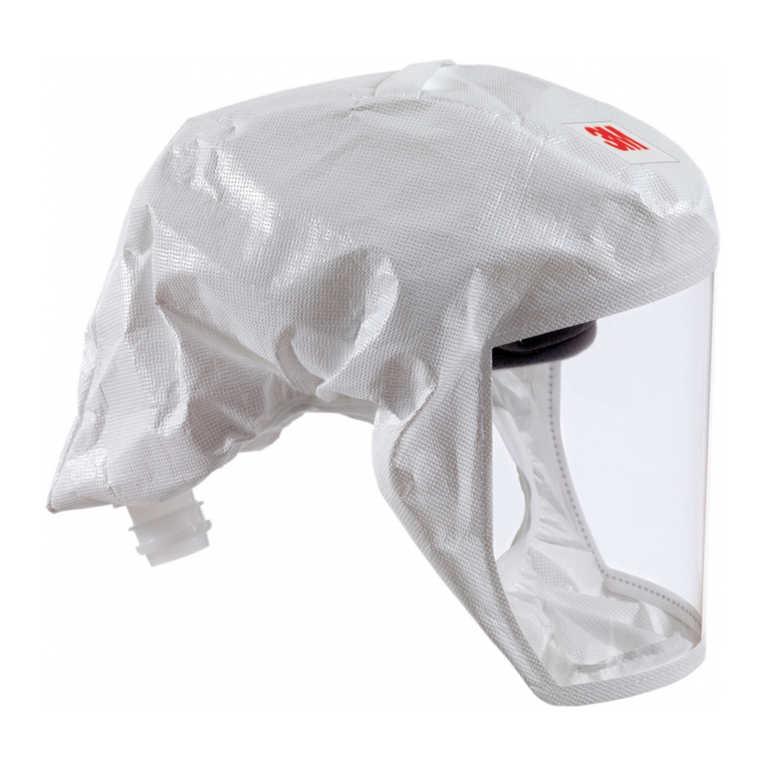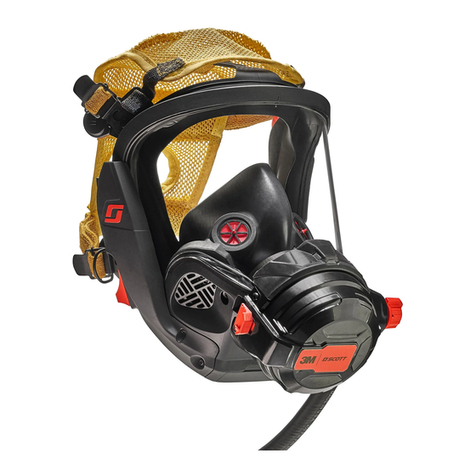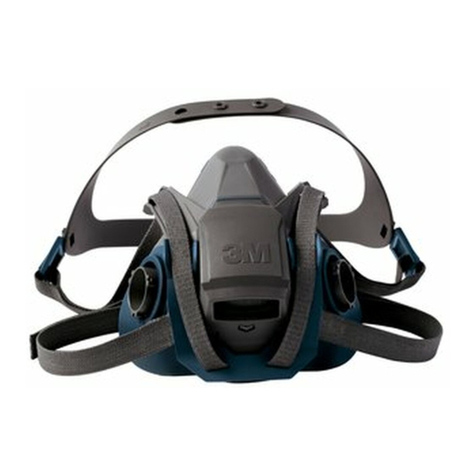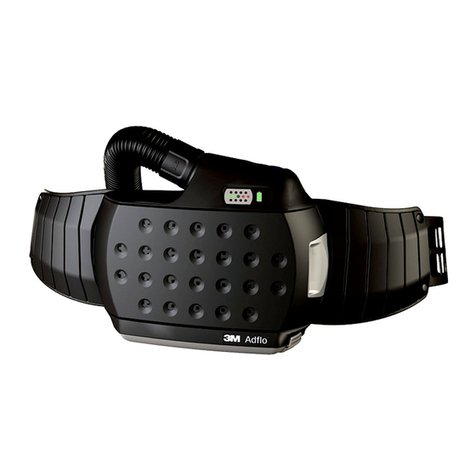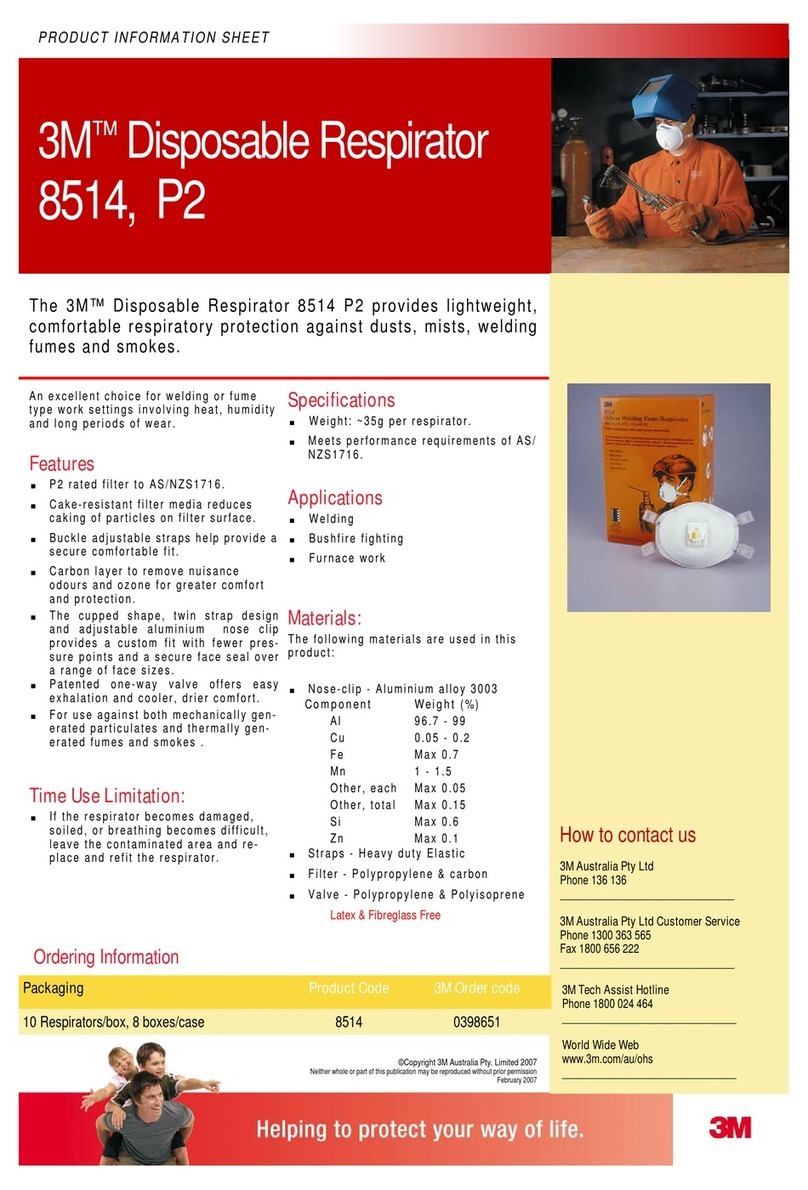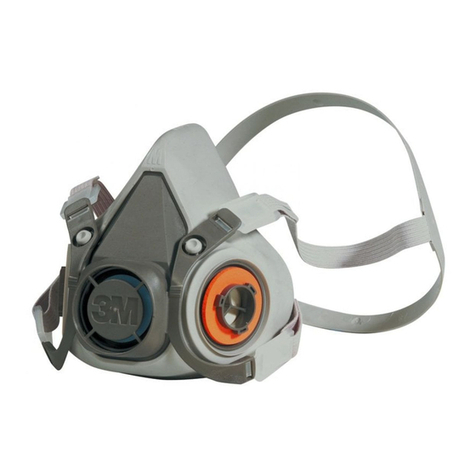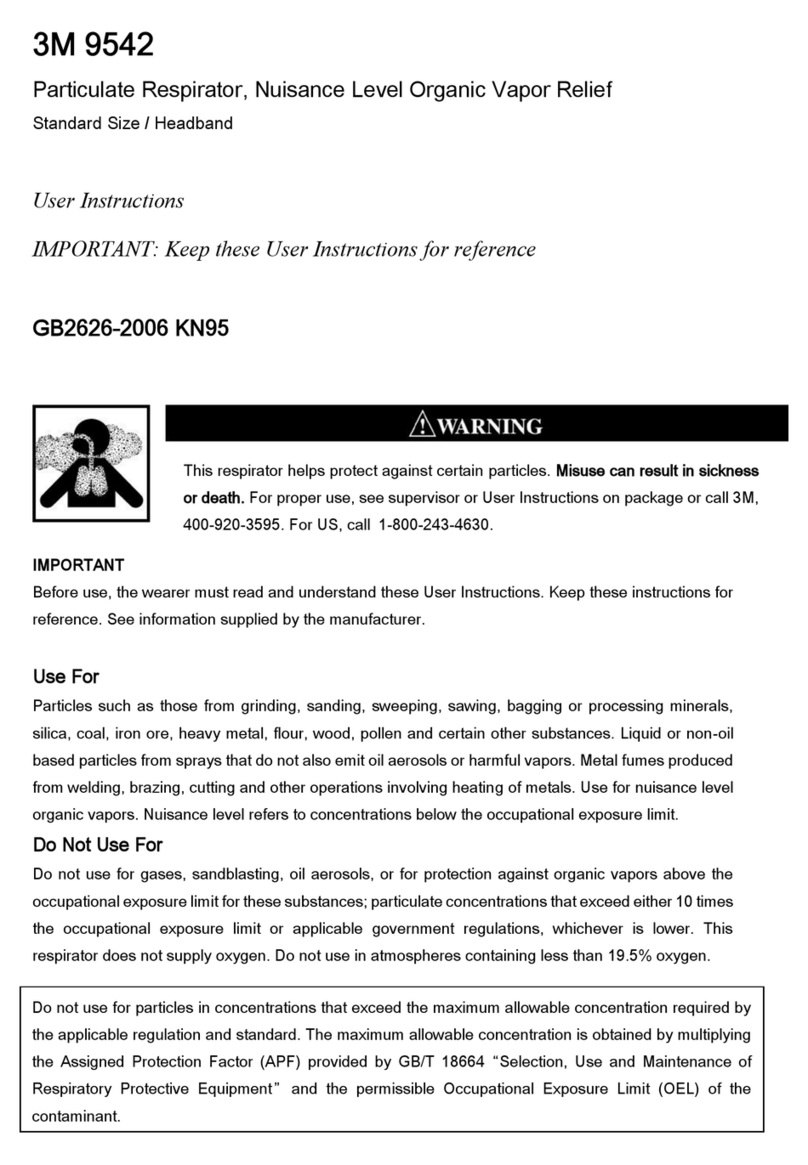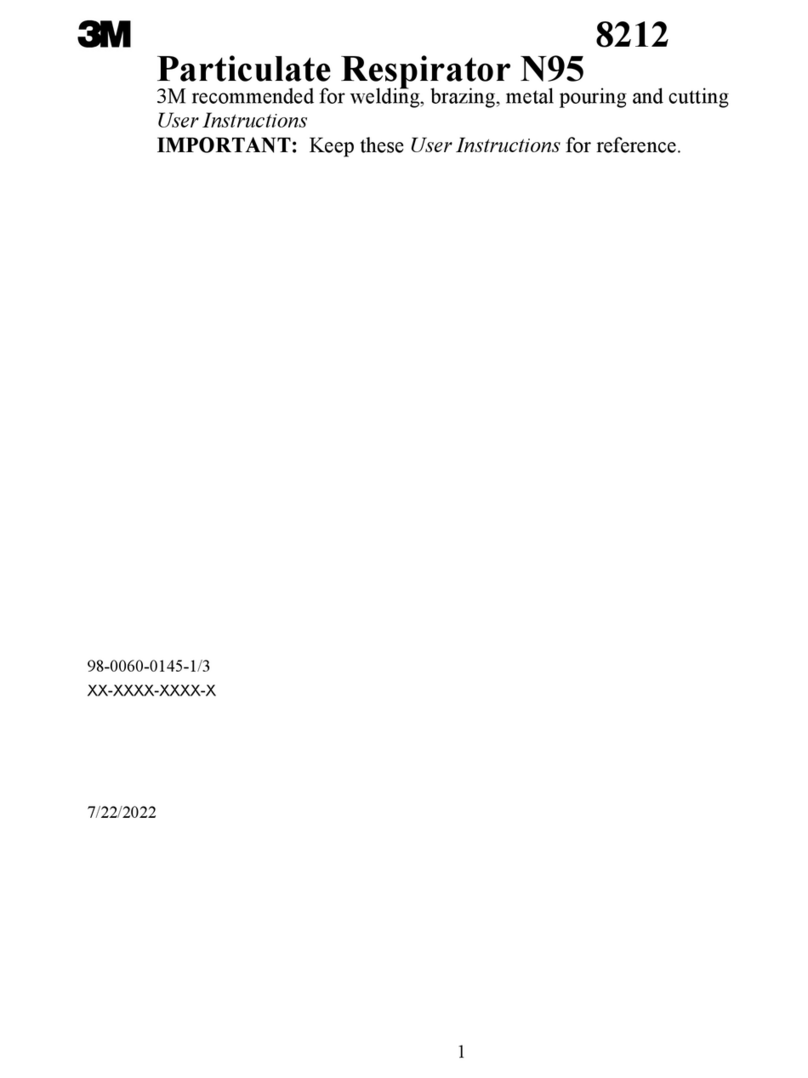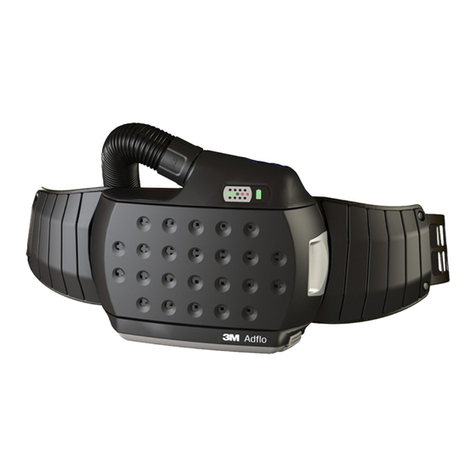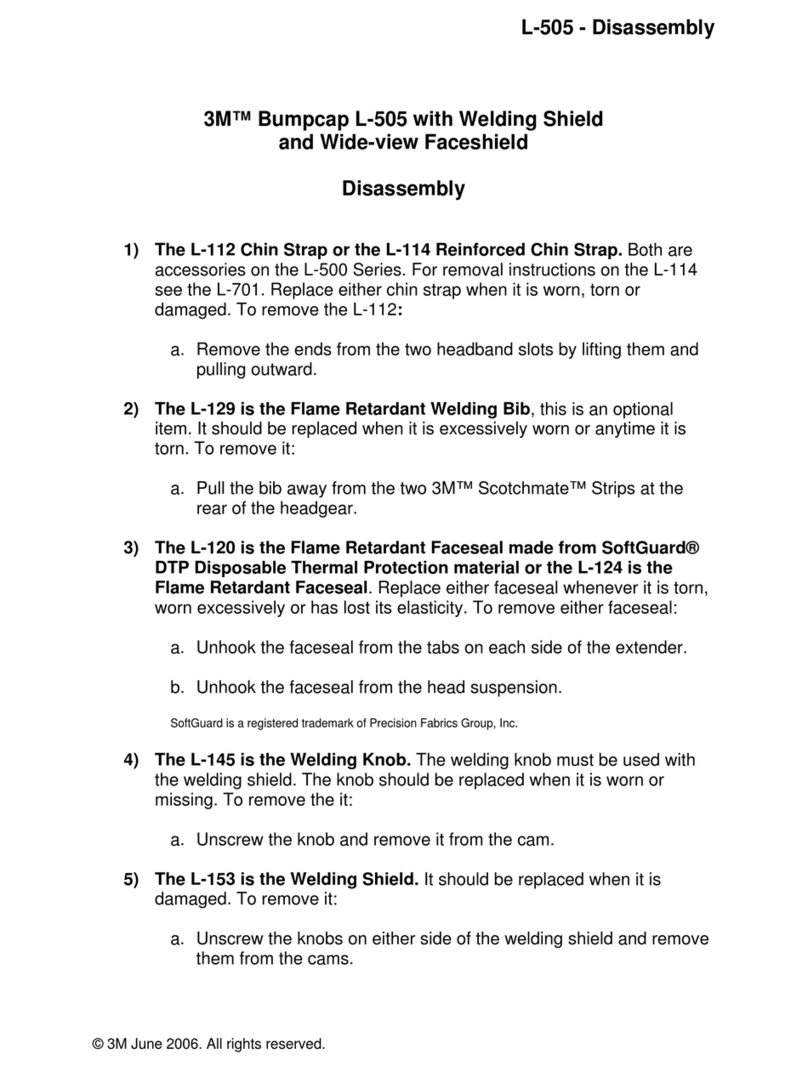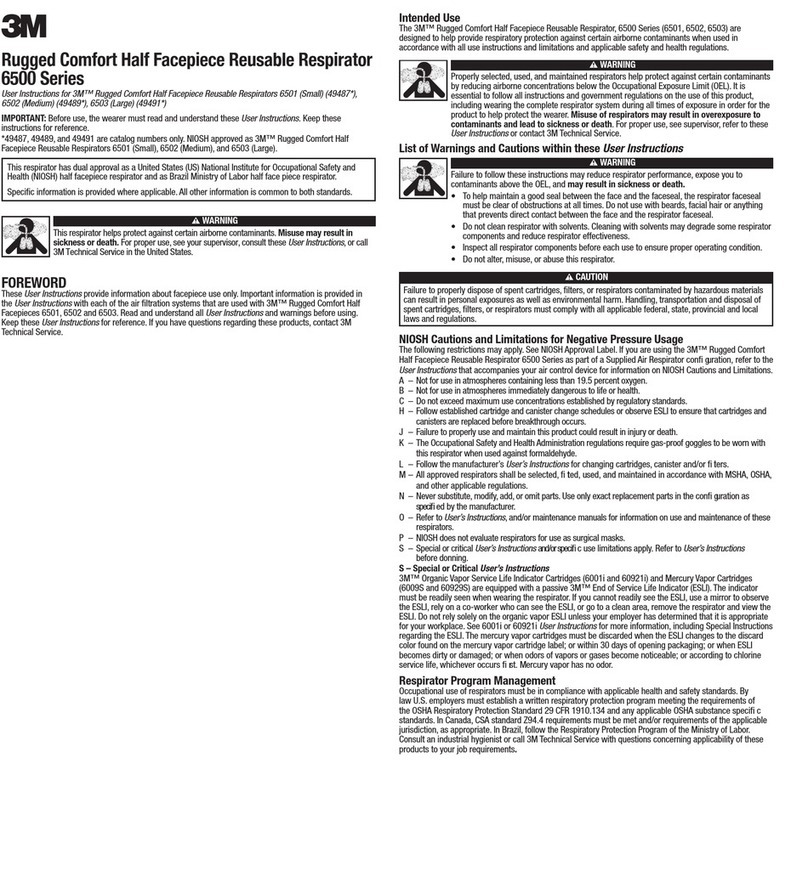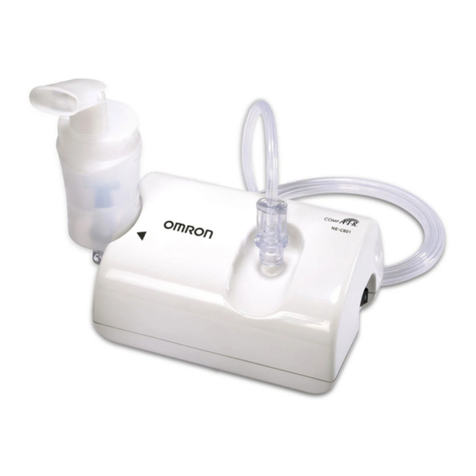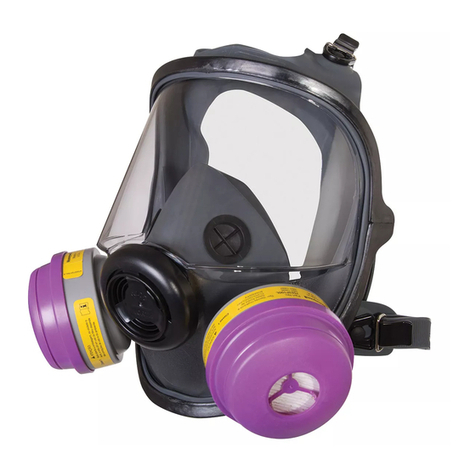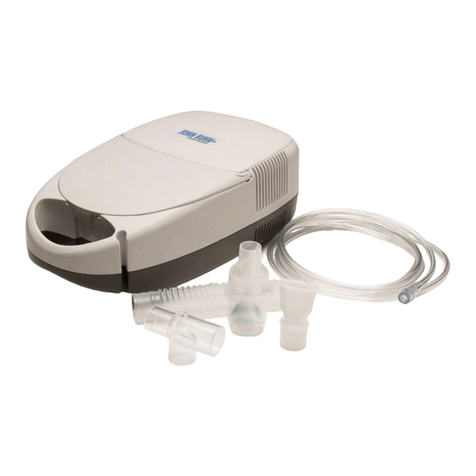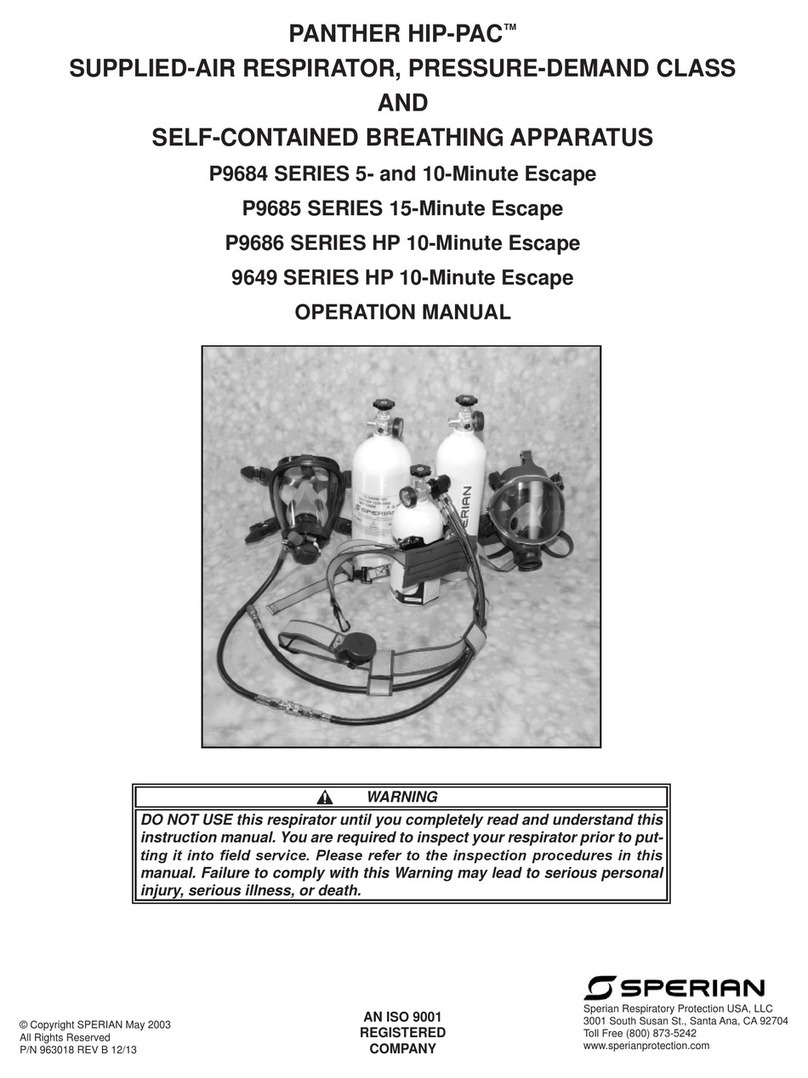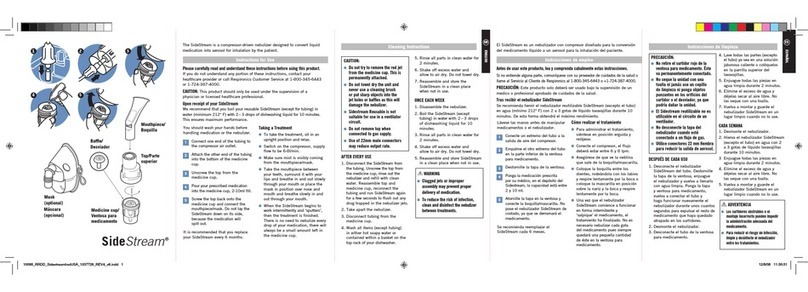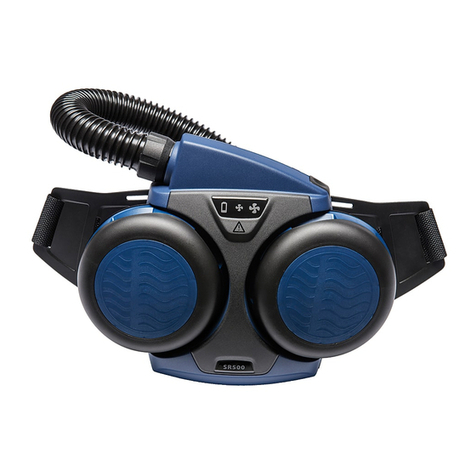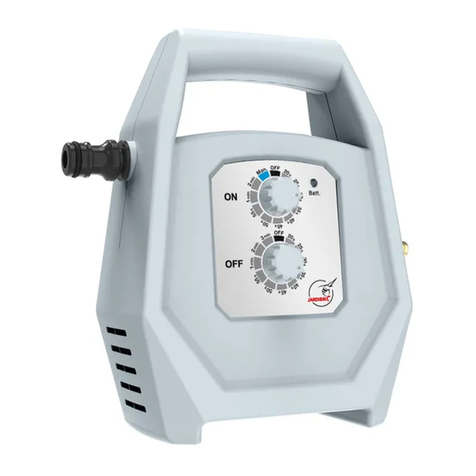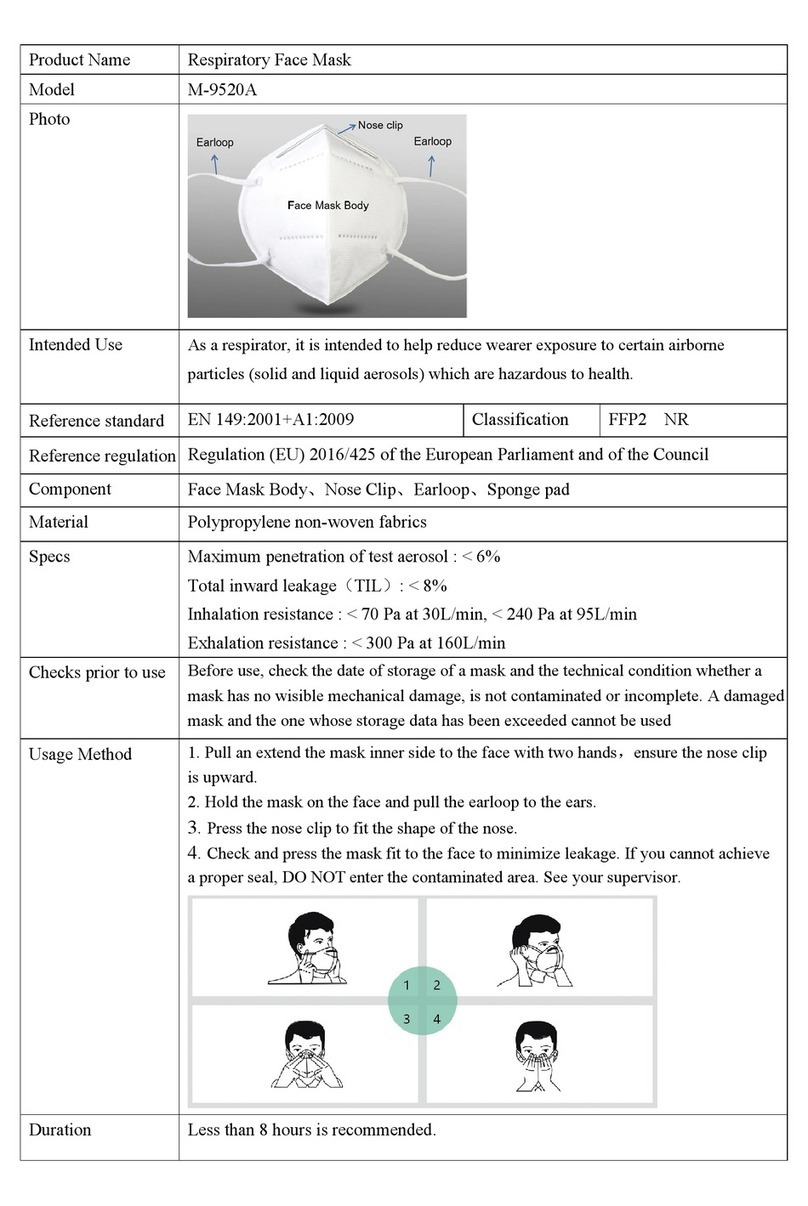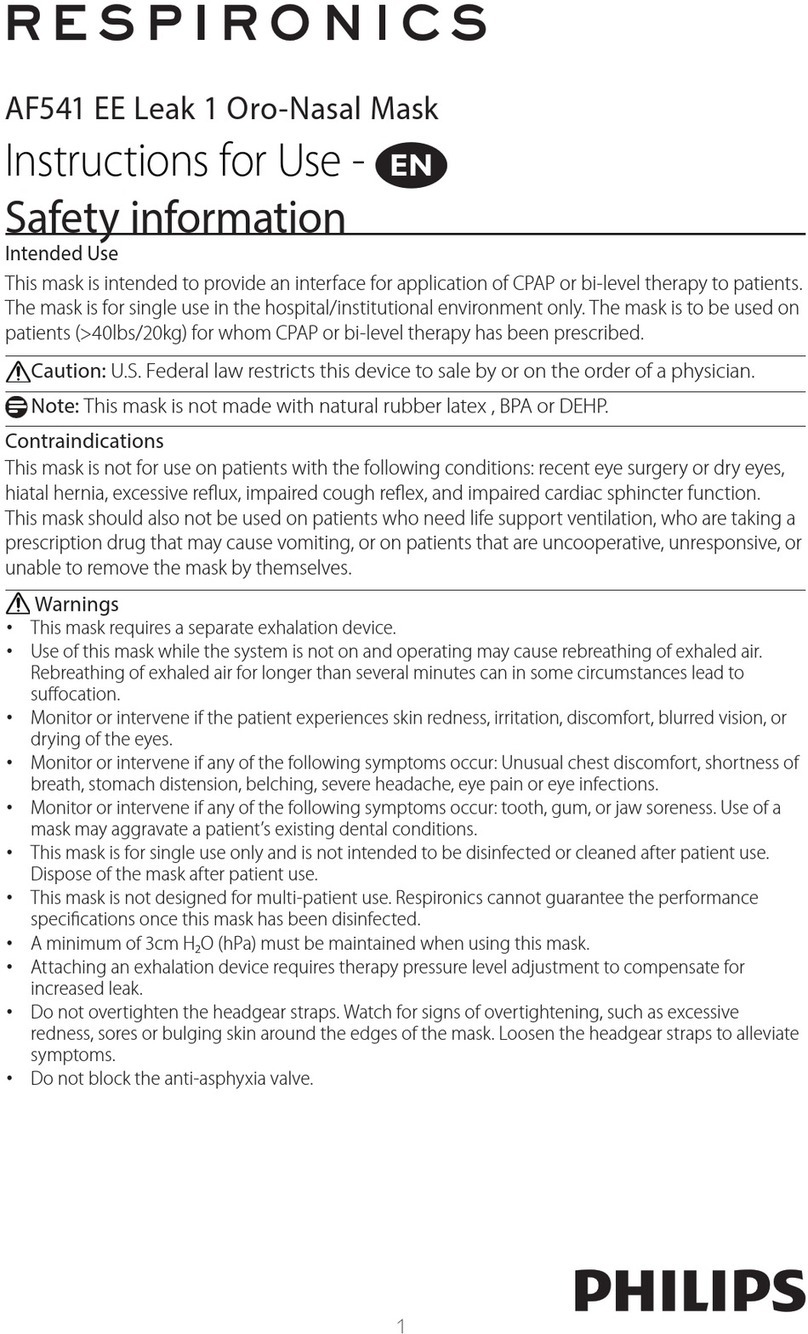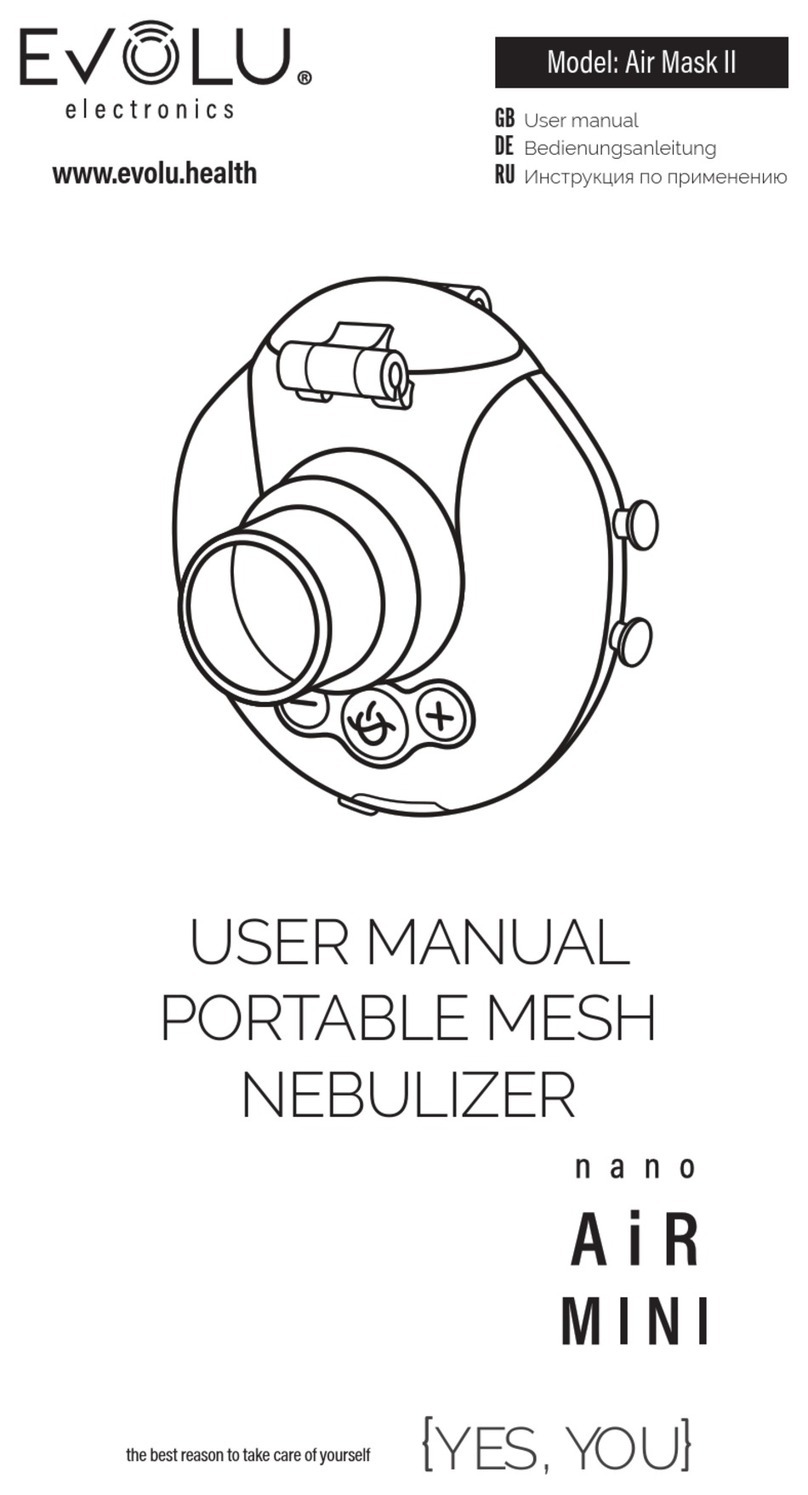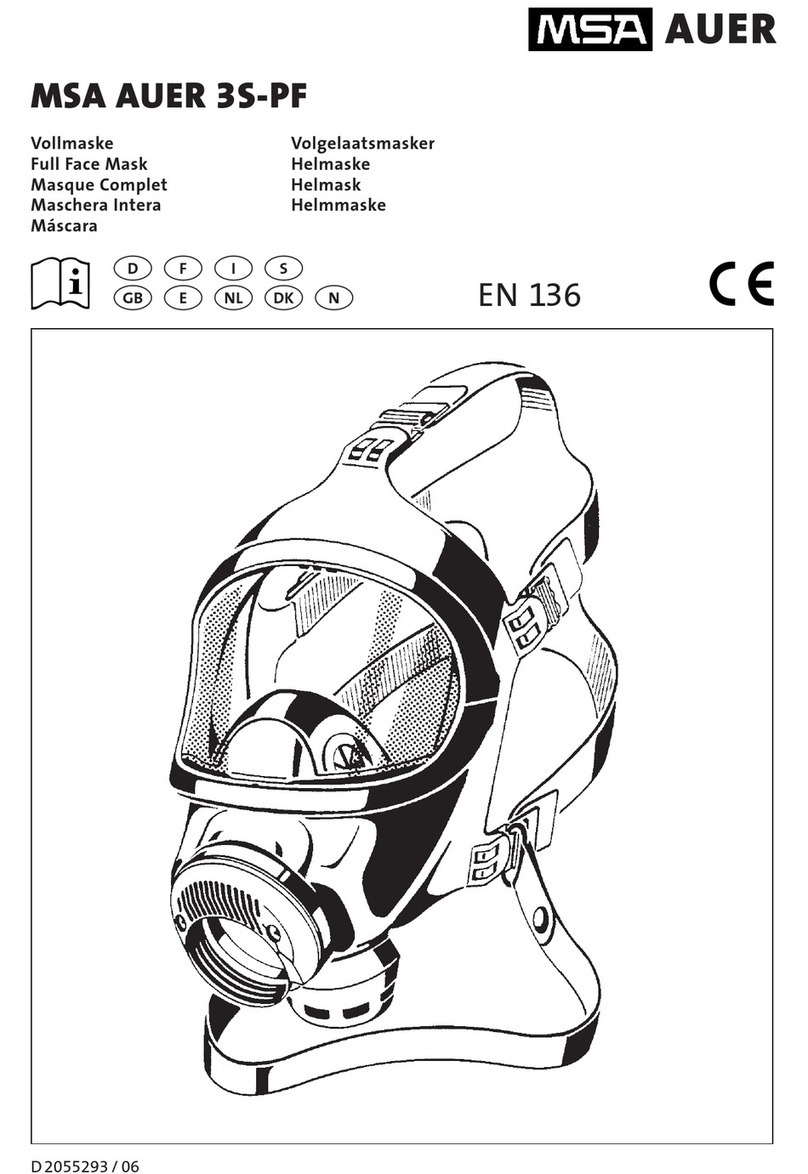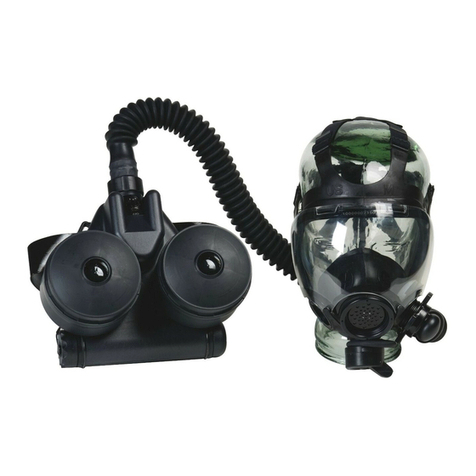
2
This respirator helps protect against certain particles. Misuse may result in sickness or death. For proper
use, see supervisor, or User Instructions, or call 3M in U.S.A.,
1-800-247-3941. In Canada, call Technical Service at 1-800-267-4414.
IMPORTANT
Before use, wearer must read and understand these User Instructions. Keep User Instructions for reference.
Use For
Particles such as those from grinding, sanding, sweeping, sawing, bagging, or processing minerals, coal, iron
ore, flour, metal, wood, pollen, and certain other substances. Liquid or non-oil based particles from sprays
that do not also emit oil aerosols or vapors. For additional information on 3M use recommendations for this
class of respirator please consult the 3M Respirator Selection Guide found on the 3M OH&ESD web site at
www.3M.com/occsafety or call 1-800-243-4630 in U.S.A. In Canada call 1 800 267-4414.
Do Not Use For
Do not use for gases and vapors, oil aerosols, asbestos, or sandblasting; particulate concentrations that exceed
either 10 times the occupational exposure limit or applicable government regulations, whichever is lower. In
the U.S., do not use when OSHA substance specific standards, such as those for, arsenic, cadmium, lead in
the construction industry, or 4,4’-methylene dianiline (MDA), specify other types of respiratory protection.
This respirator does not supply oxygen.
Biological Particles
This respirator can help reduce inhalation exposures to certain airborne biological particles (e.g. viruses,
mold, Bacillus anthracis, Mycobacterium tuberculosis, etc.) but cannot eliminate the risk of contracting
infection, illness or disease. OSHA and other government agencies have not established safe exposure limits
for these contaminants.
Use Instructions
1. Failure to follow all instructions and limitations on the use of this respirator and/or failure to wear this
respirator during all times of exposure can reduce respirator effectiveness and may result in sickness or
death.
2. Before occupational use of this respirator, a written respiratory protection program must be implemented
meeting all the requirements of OSHA 29 CFR 1910.134 such as training, fit testing, medical evaluation,
and applicable OSHA substance specific standards. In Canada, CSA standard Z94.4 requirements must
be met and/or requirements of the applicable jurisdiction, as appropriate.
3. The particles which can be dangerous to your health include those so small that you cannot see them.
4. Leave the contaminated area immediately and contact supervisor if dizziness, irritation, or other distress
occurs.
5. Store the respirator away from contaminated areas when not in use.
6. Inspect respirator before each use to ensure that it is in good operating condition. Examine all the
respirator parts for signs of damage including the two headbands, staples, noseclip, and nosefoam. The
respirator should be disposed of immediately upon observation of damaged or missing parts. Filtering
facepieces are to be inspected prior to each use to assure there are no holes in the breathing zone other
than the punctures around staples and no damage has occurred. Enlarged holes resulting from ripped or





